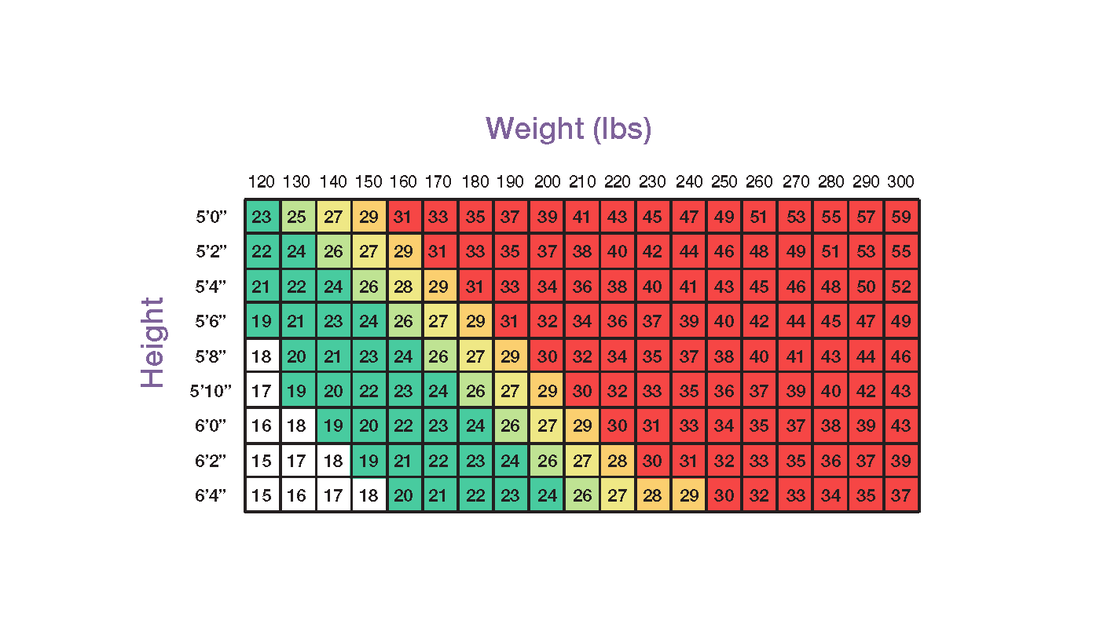OSA Assessment ToolsIndividuals that suffer with OSA tend to exhibit symptoms that often develop gradually over a long period time, so gradually in fact that those afflicted with the affects of OSA often accept them as just a fact of life. But that does not have to be the case and diagnosis and treatments are readily available to help patients achieve better sleep, health and minimize or eliminate the long term health risks.
The most often reported symptoms include: Loud Disruptive Snoring Frequent awakenings (or arousels) with the feeling of gasping for breath Excessive Daytime Sleepiness People telling you you "Stop Breathing" at night (Witnessed Apneas) Morning Headaches Another indicator of a high probability of having OSA is called BMI (Body Mass Index)
Reference the image below and determine your BMI by cross-referencing your Height and Weight. If the result is in the Red Range or above a BMI of 30, you would have a higher likelihood of suffering with OSA. Note: An initial Threshold being considered for mandatory screening for OSA by DOT Regulators has been reported to be a BMI ≥ 35 by the FAA Flight Surgeon. Another Measure often used to determine likelihood of OSA is an assessment of Daytime Sleepiness as assessed by a validated Questionaire referred to an an Epworth Sleepiness Score (ESS). Answer the following series of questions and determine how likely you are to "Doze off" in these scenarios and total the score at the end.
Epworth Sleepiness Scale The Epworth Sleepiness Scale is used to determine the level of daytime sleepiness. Use the following scale to choose the most appropriate number for each situation: 0 = would never doze or sleep. 1 = slight chance of dozing or sleeping 2 = moderate chance of dozing or sleeping 3 = high chance of dozing or sleeping Situation Chance of Dozing or Sleeping Sitting and reading ____ Watching TV ____ Sitting inactive in a public place ____ Being a passenger in a motor vehicle for an hour or more ____ Lying down in the afternoon ____ Sitting and talking to someone ____ Sitting quietly after lunch (no alcohol) ____ Stopped for a few minutes in traffic while driving ____ Total score (add the scores up) ____ (This is your Epworth score) A score of 10 or more is considered sleepy. A score of 18 or more is very sleepy. If you score 10 or more on this test, you should consider whether you are obtaining adequate sleep, need to improve your sleep hygiene and/or need to see a sleep specialist. These issues should be discussed with your personal physician. |

